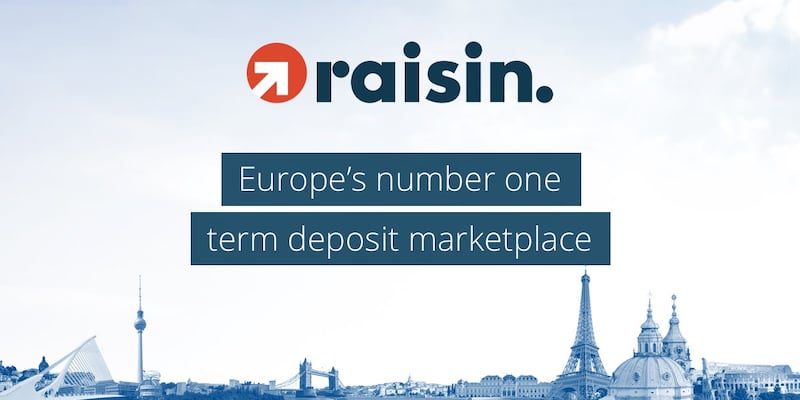Interest rate pressures are undoubtedly building in Europe, though Irish savers are unlikely to feel the benefit for some time yet as banks here continue to cut deposit rates, despite the changing environment.
Last month AIB became the latest bank to cut its deposit rates, slicing its demand deposit rate to just 0.01 per cent. AIB’s online personal savings plan has also fallen from 0.15 per cent to just 0.01 per cent.
And the bank has more cuts in mind. From May 22nd, the return it offers on its regular savings account will drop from 2 per cent to just 1.5 per cent, while its youth savings account will drop from 1.05 to just 0.01 per cent.


AIB is not alone in sending rates downwards. Bank of Ireland cut its demand deposit rate to zero as of March 20th, marking perhaps the first time a bank has offered a zero return to retail customers in Ireland.
This latest move should worry savers, as noted by broker Cantor Fitzgerald in a recent note. Bank of Ireland “is a price setter of deposit rates given its size and market leading position”.
The situation may improve by 2018, as rate pressure turns into rate rises.
Dermott Aspell, a fixed income strategist at Goodbody Stockbrokers, says savers may not have too long to wait for a rebound in interest rates. “Market expectations are that rates will probably start to rise in Q1 next year,” he says. Analysts are 50:50 on a rate rise next January.
Of course, there remains plenty of economic uncertainty on the horizon, ranging from upcoming elections in France and Germany to the Brexit fall-out, which could temper the ECB’s desire to raise rates. “If we get a shock, the ECB will certainly remain accommodative,” Aspell says.
For now however, deposit rates will likely continue to fall from their already shallow depths. Figures from Raisin.com show that Irish savers are currently getting some of the lowest rates in the EU.
The average of the top five one-year deposit accounts in Ireland is just 0.6 per cent, compared with 1.8 per cent in Italy, 1.2 per cent in France and Portugal, and 1 per cent in Spain – all working under the same European Central Bank interest rate regime.
Returns available
Against such a background, there is little at the moment to excite Irish savers. The best returns tend to be available on regular savings accounts, but of course the amount you can save in such accounts tends to be limited.
Both EBS and KBC, for example, offer a market-beating return of 3 per cent on their regular savings accounts. But even if you save €100 a month, you will still only have made €19.50 after a year. With KBC you can save up to €1,000 a month and earn 3 per cent on amounts up to €40,000, after which it slumps to 0.15 per cent.
An account with Nationwide UK earn 2 per cent, but everything over €1,000 a month earns interest at a lower rate of 0.51 per cent.
For those with a lump-sum who want to be able to access it as they please, the best they can hope for is a return of 0.6 per cent with KBC. Savings of €15,000 will still only return €90 a year – and that is before you deduct Dirt. You will then be left with just €54.90.
At the other end of the scale, money left in a BOI demand deposit account will have nothing to show for it at the end of the year. A similar AIB account will leave you just €1.50 better off.
The best savings rates on the market are now clearly available from foreign players, with KBC, Nationwide UK and Rabodirect offering significantly better (albeit still very low) returns on instant access accounts.
Market competition
The low rates demonstrate how important competition is in the marketplace – and how damaging the departure of another banking player from Ireland could be.
AIB does have slightly better rates, but it doesn’t distinguish itself either. The best return now on offer on a lump sum from the State-owned bank is just 0.25 per cent over two years. And yet AIB continues to offer German customers a significantly higher return. Through the Weltsparen portal, a savings platform for German savers, the bank is offering a return of 0.5 per cent over one year on amounts of €5,000-€100,000.
Cutting deposit rates helps boost a bank’s profitability – important given that AIB is ramping up for a partial IPO later this year, and Bank of Ireland still has a 14 per cent government stake to offload.
AIB’s net interest margin, or the differential between what it makes on lending money and what it pays out for borrowing it (ie on deposits) has grown steadily in recent years. As the bank noted in its recent financial results, its net interest margin has been on a “positive upward trajectory”, growing by 28 basis points in 2016 to 2.25 per cent. Bank of Ireland, meanwhile, reported a margin of 2.19 per cent for 2016, steady on 2015.
A bank can enhance this margin by either increasing the amount it charges borrowers or by cutting the amount it pays lenders (ie deposit holders). With increasing pressure on keeping mortgage rates down, the easier option, it would seem, is to cut the returns it offers savers.
What can savers do?
Unfortunately, it’s difficult to replicate the low-risk nature of deposits with other products, as a greater yield will mean a greater risk.
And looking at corporate deposits, which one could expect to begin moving faster than retail ones, there is no sign of improvement. On a short one-month deposit, AIB, BOI, Ulster Bank and PTSB are either offering zero or negative rates.
International options for getting a better return are also limited, unless savers look to open nonresident accounts. Despite the arrival of pan-European deposit takers such as Raisin.com, its entry into Ireland was stopped by the Central Bank on the grounds that it needed a license under the Investment Intermediaries Act to operate here. A spokeswoman for the savings platform says it does not yet have any update, “but hope that this will change in the upcoming weeks”.
Going over the Border for a better return – and taking on the associated currency risk – is unlikely to reward you, with AIB’s First Trust operation in Northern Ireland offering just 0.6 per cent on 12-month deposits.
And looking to avoid Dirt (still levied at a hefty 39per cent) by opting for a State savings product will unlikely result in added dividends. You will earn just 0.98 per cent on regular savings with the State, or just €6.37 a year based on savings of €100 a month. So while you will save €2.50 in Dirt, it’s not really anything of note.
While you can do better over the long term, with an annual return of 1.5 per cent offered on the 10-year solidarity bond, you do take the risk of missing out on better rates if and when they start to rise again.
The problem, of course, is inflation.
While official inflation rates are of the order of just 0.5 per cent for Ireland in February, some economists fear that muted oil prices are keeping a handle on inflation even as prices rise in other parts of the economy.
Earning such low returns on your money raises the problem that the real value of your savings is actually declining.











